Caryn
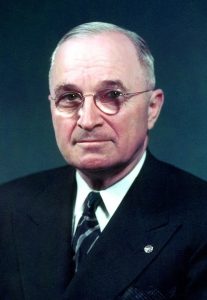
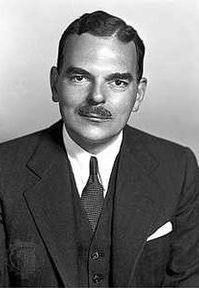 Now that Election Day is here, our thoughts have turned from campaign speeches, fact checking, and stressing out over the polls, to getting out and voting, and then sitting back to watch the election night coverage…unless you are so tired of the whole political process, that you just want the whole thing to be over with!! Even if you are very intent on the election, you are most likely very tired of the political process. Still, the elections are very important…especially this year.
Now that Election Day is here, our thoughts have turned from campaign speeches, fact checking, and stressing out over the polls, to getting out and voting, and then sitting back to watch the election night coverage…unless you are so tired of the whole political process, that you just want the whole thing to be over with!! Even if you are very intent on the election, you are most likely very tired of the political process. Still, the elections are very important…especially this year.
This year isn’t the only critical year we have ever had either. The November 3, 1948 Presidential election was really an important one too. President Harry S Truman was the incumbent, running against New York Governor Thomas Dewey. Truman was very much pro-Israel, and whether people realize it or not, that is important. That fact isn’t always considered important in an election, but in 1948, I believe it was, and that it made the difference. Nevertheless, many of America’s major newspapers had predicted a Dewey victory early on in the campaign cycle. A New York Times article editorialized that “if Truman is nominated, he will be forced to wage the loneliest campaign in recent history.” Maybe that was true, but it was not a deterrent. In fact, that may be the reason Truman chose not to use the press to get his message across. Truman decided in July 1948, to head out on an ambitious 22,000-mile “whistle stop” railroad and automobile campaign tour. Truman’s message was simple…”Help me keep my job as President.” As time went on, things looked worse and worse for Truman. The polls were against him. Nevertheless, the common voters warmed to his simple message, and although he was a political “underdog,” and at the end of one speech, the crowd could be heard yelling “Give ’em Hell, Harry!” It didn’t take long for the phrase to catch on and become Truman’s unofficial campaign slogan.
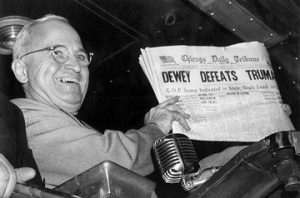
Then came the Chicago Tribune’s issue stating that Dewey had won the election. In reality, the Chicago Tribune severely jumped the gun. I’m sure the final outcome of the brought with it as much confusion as did the mistaken prediction of a Dewey win. Be that as it may, the “Dewey Defeats Truman” headline was a serious “egg on the face” moment for the Chicago Tribune. On Wednesday morning there was a new headline showing a picture of re-elected President Harry S Truman holding the Chicago Tribune issue that had wrongfully predicted his political downfall. In the end, Truman beat Dewey by 114 electoral votes. All I can say is beware of those early predictions.
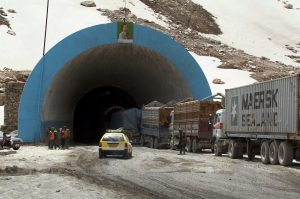 Sometimes when a vehicle accident occurs, one or both vehicles catch on fire. It is almost to be expected periodically, but it is almost never expected to be catastrophic. Nevertheless, on November 2, 1982, such an accident occurred in the Salang Tunnel in Afghanistan, and it cost 3,000 people their lives. Most of the victims were Soviet soldiers traveling to Kabul.
Sometimes when a vehicle accident occurs, one or both vehicles catch on fire. It is almost to be expected periodically, but it is almost never expected to be catastrophic. Nevertheless, on November 2, 1982, such an accident occurred in the Salang Tunnel in Afghanistan, and it cost 3,000 people their lives. Most of the victims were Soviet soldiers traveling to Kabul.
The entrance into Afghanistan by the Soviet Union that year was disastrous in nearly every way, but possibly the worst single incident was the Salang Tunnel explosion. At the time of the crash, a long army convoy was traveling from Russia to Kabul through the border city of Hairotum. The route took the convoy through the Salang Tunnel, which is 1.7 miles long, 25 feet high and approximately 17 feet wide. The tunnel is one of the world’s highest at an altitude of 11,000 feet. It was built by the Soviets in the 1970s.
As was common in those days, the Soviet army kept a tight lid on the story. It is believed that an army vehicle 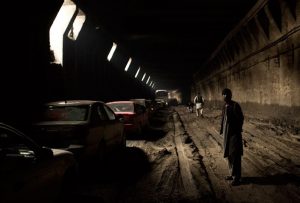 collided with a fuel truck about half way through the long tunnel. When the fuel truck exploded, about 30 buses carrying soldiers were immediately blown up. Fire in the tunnel spread quickly and the survivors of the blast began to panic. The ensuing chaos made the military stationed at the ends of the tunnel believe the explosion was part of an attack. As per protocol for terrorist attacks, the military stationed at both ends of the tunnel stopped traffic from exiting. If the fire wasn’t enough, the idling cars in the tunnel caused the levels of carbon monoxide in the air to increase drastically, The fire continued to spread as well. Exacerbating the situation, the tunnel’s ventilation system had broken down a couple of days earlier, resulting in further casualties from burns and carbon monoxide poisoning.
collided with a fuel truck about half way through the long tunnel. When the fuel truck exploded, about 30 buses carrying soldiers were immediately blown up. Fire in the tunnel spread quickly and the survivors of the blast began to panic. The ensuing chaos made the military stationed at the ends of the tunnel believe the explosion was part of an attack. As per protocol for terrorist attacks, the military stationed at both ends of the tunnel stopped traffic from exiting. If the fire wasn’t enough, the idling cars in the tunnel caused the levels of carbon monoxide in the air to increase drastically, The fire continued to spread as well. Exacerbating the situation, the tunnel’s ventilation system had broken down a couple of days earlier, resulting in further casualties from burns and carbon monoxide poisoning.
Rescue and recovery was slow due to the lack of safe working conditions for rescue crews. It took several days for workers to reach all the bodies in the tunnel. To make matters worse, the Soviet army limited the 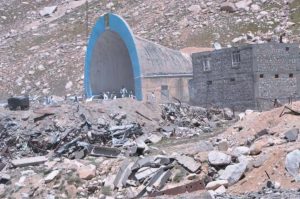 information released about the disaster, so we may never know the full extent of the tragedy. While the fire and carbon monoxide poisonings were tragic in and of themselves, the fact that the military thought the accident might be a terrorist attack, really caused the massive amounts of death. The people in the tunnel were trapped, and there was no ventilation. They couldn’t get away from the death enveloping them on all sides. I’m sure there was panic and screaming, making the chaos even worse. The very thought of all those people trapped in that tunnel makes me feel nauseous, and I’m sure that if the Soviets kept it under wraps, there were families who never knew what happened to their loved ones.
information released about the disaster, so we may never know the full extent of the tragedy. While the fire and carbon monoxide poisonings were tragic in and of themselves, the fact that the military thought the accident might be a terrorist attack, really caused the massive amounts of death. The people in the tunnel were trapped, and there was no ventilation. They couldn’t get away from the death enveloping them on all sides. I’m sure there was panic and screaming, making the chaos even worse. The very thought of all those people trapped in that tunnel makes me feel nauseous, and I’m sure that if the Soviets kept it under wraps, there were families who never knew what happened to their loved ones.
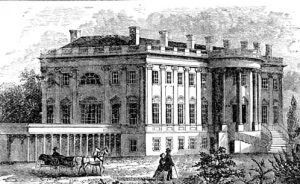 It was a long time coming. An actual house for the President of the United States was a long time coming. Prior to establishing the nation’s capital in Washington DC, the United States Congress and its predecessors had met in Philadelphia (Independence Hall and Congress Hall), New York City (Federal Hall), and a number of other locations (York, Pennsylvania; Lancaster, Pennsylvania; the Maryland State House in Annapolis, Maryland; and Nassau Hall in Princeton, New Jersey). Then, it was decided that our government needed a permanent home. Washington DC was selected.
It was a long time coming. An actual house for the President of the United States was a long time coming. Prior to establishing the nation’s capital in Washington DC, the United States Congress and its predecessors had met in Philadelphia (Independence Hall and Congress Hall), New York City (Federal Hall), and a number of other locations (York, Pennsylvania; Lancaster, Pennsylvania; the Maryland State House in Annapolis, Maryland; and Nassau Hall in Princeton, New Jersey). Then, it was decided that our government needed a permanent home. Washington DC was selected.
The first president who would have an actual government-owned home in Washington DC was President John Adams, and he would only live there for the last year of his only term in office. President John Adams, in the last year of his only term as president, moved into the newly constructed President’s House on November 1, 1800. The President’s House was the original name for what is known today as the White House. Adams and his wife had been living in temporarily at Tunnicliffe’s City Hotel near the half-finished Capitol building since June 1800, when the federal government  was moved from Philadelphia to the new capital city of Washington DC. When Adams first arrived in Washington, he wrote to his wife Abigail, who was still at their home in Quincy, Massachusetts, that he was pleased with the new site for the federal government and that he had explored the soon-to-be President’s House and liked it.
was moved from Philadelphia to the new capital city of Washington DC. When Adams first arrived in Washington, he wrote to his wife Abigail, who was still at their home in Quincy, Massachusetts, that he was pleased with the new site for the federal government and that he had explored the soon-to-be President’s House and liked it.
Although workmen had rushed to finish plastering and painting walls before Adams returned to DC from a visit to Quincy in late October, the construction was still unfinished when Adams rolled up in his carriage on November 1. However, the furniture from their Philadelphia home was in place and a portrait of George Washington was already hanging in one room. It was a decent start. The next day, Adams sent a note to Abigail, who would arrive in Washington later that month, saying that he hoped “none but honest and wise men [shall] ever rule under this roof.” I wish that 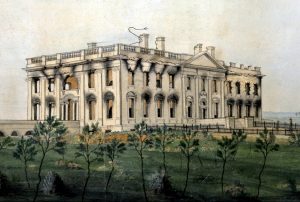 had always been the case, and of course the idea of good and bad presidents are often a matter of opinion.
had always been the case, and of course the idea of good and bad presidents are often a matter of opinion.
The President’s House though new had its issues. Adams was initially very pleased with the presidential mansion, but he and Abigail found it to be cold and damp during the winter. Abigail wrote to a friend saying that the building was tolerable only so long as fires were lit in every room. She also said that on a funny note, she also said that she had to hang their washing in an empty “audience room,” which is the current East Room. Now, that’s quite a thought. During the War of 1812, the White House was set on fire by the British, and had to be repaired.
 Anyone who finds Winter and the shortened nights depressing, can understand how a person can crave the sun. There is even a condition known as SAD (Seasonal Affective Disorder) that comes out of the limited or even lack of sunlight. People in Alaska and other areas near the pole regions often suffer from it in the dark winter days. The polar regions aren’t the only ones with the problem, however.
Anyone who finds Winter and the shortened nights depressing, can understand how a person can crave the sun. There is even a condition known as SAD (Seasonal Affective Disorder) that comes out of the limited or even lack of sunlight. People in Alaska and other areas near the pole regions often suffer from it in the dark winter days. The polar regions aren’t the only ones with the problem, however.
There is a tiny town in Norway, called Rjukan. For hundreds of years, the inhabitants of this tiny Norwegian town went without direct sunlight for almost half the year. It’s not because this town is situated near the North Pole, because it isn’t. Nevertheless, the place Rjukan is situated is the problem. Rjukan is wedged at the bottom of a steep east-west valley in southern Norway’s Telemark region. It’s surrounded by mountains, including the 6,178-foot-high Gaustatoppen.
Rjukan is a company town, founded for the employees of Norsk Hydro, an aluminum powerhouse that is still going strong today. At first the town built an aerial tramway, Krossobanen, to give employees and their families access to the winter sunshine. Sam Eyde, the founder of the town, began to consider building sun mirrors on the mountain as far back as 1913, but the tramway was built first. It was the first such system in northern Europe, and still functions today. The tramway served a purpose, but really didn’t solve the problem.
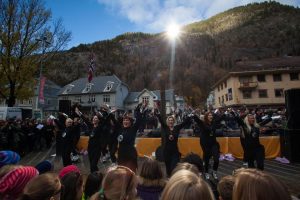
Still, the desire for the kind of direct sunlight first shared by Eyde never went away. Then, more than 90 years later, a local resident and artist, Martin Andersen took up the idea from the history books. He began to think that maybe the idea was a good one. So, on October 30, 2013, almost 100 years to the day when the idea was first presented, the Rjukan sun mirror officially opened. For the first time in the town’s history, the sun actually shown on the town in the winter months. The people were elated. At first, not everyone was on board with Andersen’s plans. Many locals criticized the $750,000 project, believing the money could be better spent elsewhere, but when they saw how excited everyone was with the day, it was hard to continue to be negative. The people put on sunglasses, and basked in the sun’s light and warmth. It was like a big party. The sun mirrors continue to be a big hit in the town, oddly in the summer, as well as the winter.
Local residents now enjoy an approximately 6,500 square foot ellipse-shaped beam of sunlight into the town square. Between 80% and 100% of the sun’s light is transferred down into the town. The mirror system has helped the tourism industry. It’s said, “This summer there were several tourists who turned their backs on the real sun, and sat instead with their faces to the sun mirror.” Locals and tourists can even hike to the mirrors. As 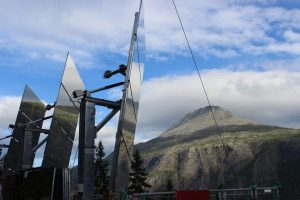 unusual as it may seem, Rjukan’s sun mirror system is not a world first. The small town of Viganella, in Italy’s steep Antrona Valley, celebrated its own day of the light in December 2006, as a sheet of steel was installed to reflect sunlight into the town square from November to February. The system in Rjukan is significantly more advanced, however. Each of the three 182 square foot mirrors are controlled computer-driven motors called heliostats. They track the movement of the sun across the horizon and constantly reposition the mirrors to keep the reflected light as consistent as possible. What a cool idea for a town and its people who can’t get easy access to the sun.
unusual as it may seem, Rjukan’s sun mirror system is not a world first. The small town of Viganella, in Italy’s steep Antrona Valley, celebrated its own day of the light in December 2006, as a sheet of steel was installed to reflect sunlight into the town square from November to February. The system in Rjukan is significantly more advanced, however. Each of the three 182 square foot mirrors are controlled computer-driven motors called heliostats. They track the movement of the sun across the horizon and constantly reposition the mirrors to keep the reflected light as consistent as possible. What a cool idea for a town and its people who can’t get easy access to the sun.

 My niece, Michelle Stevens met her future husband Matt Miller when they were both in 8th grade. They became friends for life, and that hasn’t changed. That is not something you see every day, but it is their story. Michelle said that Matt reminds her a lot of her grandpa, my dad, Allen Spencer. I don’t know if my dad was the class clown, but she says Matt certainly is. Both Matt and my dad love to tease their love ones, and make people laugh. It’s a great trait to have.
My niece, Michelle Stevens met her future husband Matt Miller when they were both in 8th grade. They became friends for life, and that hasn’t changed. That is not something you see every day, but it is their story. Michelle said that Matt reminds her a lot of her grandpa, my dad, Allen Spencer. I don’t know if my dad was the class clown, but she says Matt certainly is. Both Matt and my dad love to tease their love ones, and make people laugh. It’s a great trait to have.
It’s amazing sometimes, that two people can like each other for a long time, but are not “brave” enough to take the relationship to the next level…one of being a couple. I suppose they worry about the friendship ending if things don’t work out, but for Matt and Michelle, that needn’t have been a concern. They have been a couple now for nine years, and are engaged to be married…when the pandemic allows. They had planned a tropical wedding, but that is on hold, and they might just decide to do something different too. They don’t want to wait for the 
 pandemic forever, after all.
pandemic forever, after all.
Matt works at the North Antelope Rochelle coal mine in Gillette, Wyoming. It is owned by Peabody Energy. Matt has worked there a little over three years. Matt works long hours driving some of the biggest equipment in the world. He likes his job very much, and other than the long hours, Michelle does too. I know just how she feels, because my husband worked at a uranium mine early in our marriage. It’s tough, especially since several hours of their day are spent just getting to work. Nevertheless, you do what you have to do, and you make it work. Shift work is especially hard.
When Matt is not working he’s all about hunting, fishing, and his toys! He’s a typical outdoorsman. It doesn’t matter what sport it is, as long as it in the woods, by a stream, or at the lake. Matt even broke a record in deer 
 hunting with a bow. I have never been able to figure out how these guys could be so accurate with a bow. Still, Matt is accurate. From water sports in summer to snow sports in winter. Matt likes it all. He also loves to watch movies. Star Wars is his all-time favorite, and that would explain the names of their two precious dogs…Obi and Leia!! The dogs are 2½ years old, and they are sisters. They fell in love with the puppies the minute they saw them. They are very happy with their little fur babies. Today is Matt’s birthday. Happy birthday Matt!! Have a great day!! We love you!!
hunting with a bow. I have never been able to figure out how these guys could be so accurate with a bow. Still, Matt is accurate. From water sports in summer to snow sports in winter. Matt likes it all. He also loves to watch movies. Star Wars is his all-time favorite, and that would explain the names of their two precious dogs…Obi and Leia!! The dogs are 2½ years old, and they are sisters. They fell in love with the puppies the minute they saw them. They are very happy with their little fur babies. Today is Matt’s birthday. Happy birthday Matt!! Have a great day!! We love you!!
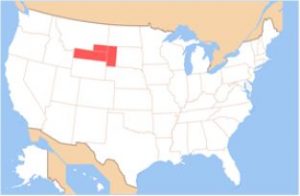 Absaroka…have you ever heard of it? No…I hadn’t either, but it was of some importance to the United States, and it would have been of some significance to me and my family had it not been a temporary situation. You see, when President Franklin D Roosevelt put “The New Deal” in place, there were a lot of people who didn’t think it was such a good deal…much like “The Green New Deal” of today. “The New Deal” was a series of programs, public work projects, financial reforms, and regulations enacted by Roosevelt in the United States between 1933 and 1939. The idea was to “help” by responding to needs for relief, reform, and recovery from the Great Depression. The plan created major federal programs and agencies, including the Civilian Conservation Corps (CCC), the Civil Works Administration (CWA), the Farm Security Administration (FSA), the National Industrial Recovery Act of 1933 (NIRA) and the Social Security Administration (SSA). They provided support for farmers, the unemployed, youth, and the elderly. The New Deal included new constraints and safeguards on the banking industry and efforts to re-inflate the economy after prices had fallen sharply. The New Deal programs included both laws passed by Congress, as well as presidential executive orders during the first term of the presidency of Roosevelt.
Absaroka…have you ever heard of it? No…I hadn’t either, but it was of some importance to the United States, and it would have been of some significance to me and my family had it not been a temporary situation. You see, when President Franklin D Roosevelt put “The New Deal” in place, there were a lot of people who didn’t think it was such a good deal…much like “The Green New Deal” of today. “The New Deal” was a series of programs, public work projects, financial reforms, and regulations enacted by Roosevelt in the United States between 1933 and 1939. The idea was to “help” by responding to needs for relief, reform, and recovery from the Great Depression. The plan created major federal programs and agencies, including the Civilian Conservation Corps (CCC), the Civil Works Administration (CWA), the Farm Security Administration (FSA), the National Industrial Recovery Act of 1933 (NIRA) and the Social Security Administration (SSA). They provided support for farmers, the unemployed, youth, and the elderly. The New Deal included new constraints and safeguards on the banking industry and efforts to re-inflate the economy after prices had fallen sharply. The New Deal programs included both laws passed by Congress, as well as presidential executive orders during the first term of the presidency of Roosevelt.
The New Deal failed because Roosevelt misunderstood the cause of the Great Depression. When a doctor misdiagnoses the symptoms that present themselves, the doctor cannot prescribe the right medicine to cure the disease of a patient. Similarly, Roosevelt prescribed “The New Deal” to cure the economy of the United States from the Great Depression. Roosevelt’s “medicine” did not work because his administration failed to recognize the true causes of the Great Depression and therefore prescribed the wrong medicine. Roosevelt assumed that the free market, and not the government caused the Great Depression. Roosevelt believed the Great Depression was partly caused by poor investments and stock manipulations by rich people. To complicate matters, he blamed the Great Depression on bankers, speculators, and journalists. In reality, the causes of the Great Depression boiled down to three major causes…which explain why there was a banking crisis, why the  stock market declined, why exports vanished, why trading partners were upset, why major industries collapsed, and why there was uncertainty on the administration’s policies. These three explanations of the causes contrast with Roosevelt’s assumption that the private, not the public sector caused the problem. First, the negative consequences of World War I, increasing debt from less than $2 billion to over $20 billion, while at the same time, US loans to Europe amounted to over $10 billion. Second, the Smoot-Hawley Tariff Act…the highest tariff in US history, which affected over 3,000 imported items and even increased taxes on some items. As a result of those high tariffs, foreign goods became less competitive and similar domestic goods more competitive. Third, the Federal Reserve did not prevent a banking crisis, but rather helped cause one. It was argued that the economic contraction was exacerbated because of the bank failures and the massive withdrawals of currency from the financial system while the Federal Reserve did not provide the necessary liquidity that the system required.
stock market declined, why exports vanished, why trading partners were upset, why major industries collapsed, and why there was uncertainty on the administration’s policies. These three explanations of the causes contrast with Roosevelt’s assumption that the private, not the public sector caused the problem. First, the negative consequences of World War I, increasing debt from less than $2 billion to over $20 billion, while at the same time, US loans to Europe amounted to over $10 billion. Second, the Smoot-Hawley Tariff Act…the highest tariff in US history, which affected over 3,000 imported items and even increased taxes on some items. As a result of those high tariffs, foreign goods became less competitive and similar domestic goods more competitive. Third, the Federal Reserve did not prevent a banking crisis, but rather helped cause one. It was argued that the economic contraction was exacerbated because of the bank failures and the massive withdrawals of currency from the financial system while the Federal Reserve did not provide the necessary liquidity that the system required.
As people became more and more agitated about the unsuccessful New Deal, an idea began to form…secession. One of the leaders of the secessionist movement was A R Swickard, the street commissioner of Sheridan, Wyoming, who appointed himself “governor” and started hearing grievances in the “capital” of Sheridan. The new state was to be called Absaroka, which means “children of the large-beaked bird.” They planned secession in 1939. This region largely belongs to the Crow people and the Sioux, according to the Treaty of Fort Laramie (1851). Absaroka is also the namesake of the Absaroka mountain range. The area involved was the entire northern part of Wyoming, the western part of South Dakota, including the Black Hills, and the southeastern corner of Montana. Increasing tourism to the region was a motivation for the proposed state because Mount Rushmore (constructed 1927–1941) would be within Absaroka according to some plans.
The region’s complaints came from ranchers and independent farmers in remote parts of the three states, who  resented the New Deal and Democratic control of state governments, especially the government of Wyoming. In preparation for state secession, state automobile license plates bearing the name were distributed, as well as pictures of Miss Absaroka 1939. The movement was unsuccessful and fairly short-lived. The chief record of its existence comes from the Federal Writers’ Project, which included a story about the plan as an example of Western eccentricity. Oh those eccentric Westerners!! Imagine wanting to limit government, high taxes, and strict laws and mandates!! What were they thinking? Freedom, limited government, capitalism vs socialism…yep among other things, that’s what they were thinking.
resented the New Deal and Democratic control of state governments, especially the government of Wyoming. In preparation for state secession, state automobile license plates bearing the name were distributed, as well as pictures of Miss Absaroka 1939. The movement was unsuccessful and fairly short-lived. The chief record of its existence comes from the Federal Writers’ Project, which included a story about the plan as an example of Western eccentricity. Oh those eccentric Westerners!! Imagine wanting to limit government, high taxes, and strict laws and mandates!! What were they thinking? Freedom, limited government, capitalism vs socialism…yep among other things, that’s what they were thinking.

 My niece, Susan Griffith is a Client Development Executive by trade. She works for Blue Cross Blue Shield, but there is so much more to Susan than that. Like her mom, Debbie Cook, Susan likes to cross stitch. She is currently working on a special picture for a friend’s babies. Those baby cross stitch patters are so cute, and I just know it will be beautiful when it is finished.
My niece, Susan Griffith is a Client Development Executive by trade. She works for Blue Cross Blue Shield, but there is so much more to Susan than that. Like her mom, Debbie Cook, Susan likes to cross stitch. She is currently working on a special picture for a friend’s babies. Those baby cross stitch patters are so cute, and I just know it will be beautiful when it is finished.
Susan is an avid reader. She finds reading to be very relaxing and informative. As with most adults, there is likely not much time to read in her busy day, but because the family loves to go camping, I’m sure she finds a little bit of time to do more of that, while everyone is hanging out in camp. Nevertheless, reading isn’t all they do while camping. Susan and her husband, Josh own several horses, and they do a lot of riding. Their girls, Jala Satterwhite and Kaytlyn Griffith are excellent equestrians, as is Josh. Susan, being a city girl, is learning, and becoming more comfortable with each ride.
The Griffith family was able to get a lot of camping in this year, and that gave Susan time to do another of her favorite pastimes…rock collecting. I had no idea Susan loved rocks, but is is something a lot of people do. Susan tends to look for a specific rock, called a wishing rock. This was something I had never heard about, although I have seen them. When she told me about the wishing rock, Susan’s daughter, Katylyn encouraged me to look it up to see what it was exactly. I did, and I found that “a ‘wishing rock’ is a beach stone with a single perfectly unbroken stripe all the way around the circumference of the rock. For a rock to qualify as a true wishing rock, there can be no breaks in the white quartz circle. Most of us have seen striped rocks, but to find 
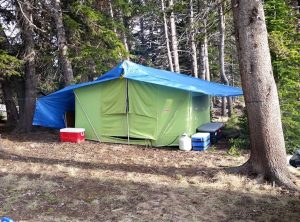 one with just a single perfect line is not easy.” So, I found out something new, thanks to Kaytlyn. The Idea is that if you find such a rock, your wish will come true. Of course, like wishing on a star, we all know that the “wishing rock” can’t grant wishes wither, but they are a very unique, and really very pretty stone, so I can see why they would capture Susan’s eye. They are truly beautiful. Today is Susan’s birthday. Happy birthday Susan!! Have a great day!! We love you!!
one with just a single perfect line is not easy.” So, I found out something new, thanks to Kaytlyn. The Idea is that if you find such a rock, your wish will come true. Of course, like wishing on a star, we all know that the “wishing rock” can’t grant wishes wither, but they are a very unique, and really very pretty stone, so I can see why they would capture Susan’s eye. They are truly beautiful. Today is Susan’s birthday. Happy birthday Susan!! Have a great day!! We love you!!

 My niece, Dustie Masterson is always an upbeat happy person. She married my nephew, Rob Masterson in 2003, and they have been soulmates since that time. They have worked very hard to build a good life for themselves and their children, Raelynn, Matthew, and Audrianna, as well as Rob’s grown daughter, Christina, when she is in town. Dustie works as a shift leader at Walgreen’s…a job she likes very much. She is a great person to be shift leader, because she is a motivator without having to be grouchy. People just naturally like Dustie, and they want to do their best for her. That really helps in the work world. Dustie is always helpful to those in need, and that also endears her to many people. She would bend over backward to help someone who needed help.
My niece, Dustie Masterson is always an upbeat happy person. She married my nephew, Rob Masterson in 2003, and they have been soulmates since that time. They have worked very hard to build a good life for themselves and their children, Raelynn, Matthew, and Audrianna, as well as Rob’s grown daughter, Christina, when she is in town. Dustie works as a shift leader at Walgreen’s…a job she likes very much. She is a great person to be shift leader, because she is a motivator without having to be grouchy. People just naturally like Dustie, and they want to do their best for her. That really helps in the work world. Dustie is always helpful to those in need, and that also endears her to many people. She would bend over backward to help someone who needed help.
Not everybody can join a family and fit right in. Often, people have to get used to a person, and their quirks, but apparently Dustie had the same quirks the rest of the family did, because there was very little adjustment needed. Of course, it helps that Dustie loves to make people laugh, and she isn’t shy about making a face or doing something that accomplishes that goal. Dustie always puts a smile on the faces of the people around her. And speaking of smiles, Dustie has a great one. When she smiles, her whole face smiles. That is a very special trait, and one that describes Dustie very well. Dustie is also very good to my sister, Cheryl, and that have endeared her to our family is a big way. Dustie has loved Cheryl as a mom, and that is awesome.
Dustie is a great mom. She hasn’t forgotten her own teenaged years, and with three children in that age group, a parent needs patience and wisdom. The teenaged years are emotional roller coasters, even for the calmest of kids. Now, with two of her kids in various stages of learning to drive, she really has her hands full. Of course, Rob will help with that too, but anyone who has had 
 kids of driving age knows, every time they want to get into the car, they want to be behind the wheel. Of course, most kids learn how to drive very quickly, but there is always the snow factor, which adds a good deal of stress to the parents of these new drivers. I know that both Dustie and Rob will do well with that, because like most parents, they will make their way through the different abilities and personalities. And after these two, they only have one more new driver to go. There is hope!! Today is Dustie’s birthday. Happy birthday Dustie!! Have a great day!! We love you!!
kids of driving age knows, every time they want to get into the car, they want to be behind the wheel. Of course, most kids learn how to drive very quickly, but there is always the snow factor, which adds a good deal of stress to the parents of these new drivers. I know that both Dustie and Rob will do well with that, because like most parents, they will make their way through the different abilities and personalities. And after these two, they only have one more new driver to go. There is hope!! Today is Dustie’s birthday. Happy birthday Dustie!! Have a great day!! We love you!!
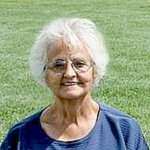
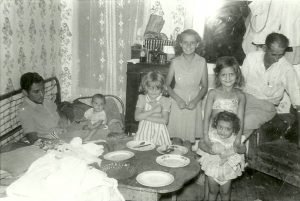 My aunt, Sandy Pattan is the youngest child of my grandparents, George and Hattie Byer. Being the youngest, gave her a unique perspective concerning her family. The rest of the siblings grew up around each other, so their lives didn’t really seem like anything special. They were kids, doing kid things, but Aunt Sandy was born just two years before her eldest sibling, Evelyn Hushman was married. Her first niece, Susie Young was born just after Aunt Sandy turned three, making her an aunt for the first of many times. As she grew up, her siblings were getting married, working at jobs, and going to school.
My aunt, Sandy Pattan is the youngest child of my grandparents, George and Hattie Byer. Being the youngest, gave her a unique perspective concerning her family. The rest of the siblings grew up around each other, so their lives didn’t really seem like anything special. They were kids, doing kid things, but Aunt Sandy was born just two years before her eldest sibling, Evelyn Hushman was married. Her first niece, Susie Young was born just after Aunt Sandy turned three, making her an aunt for the first of many times. As she grew up, her siblings were getting married, working at jobs, and going to school.
Aunt Sandy had a tendency to catch just about every bug that went through, so she also spent more time with her mom during those days when she was sick. That gave her access to the many family stories that her mom told, when they were still fresh on Grandma’s mind. The stores Grandma told were also from a unique perspective these days…one of being there during times we would classify as history. Days of Cowboys and Indians were basically just another day for Grandma, and she made the stories come alive to her youngest child. Of course, being sick was not a blessing, but those stories were…both to Aunt Sandy, and now to any of her family who want to hear them.
I love talking to Aunt Sandy on the phone, because She always has so many interesting things to say. She remembers all those stories, and is happy to share them, and I love hearing them. Her parents were born in the late 1800s and early 1900s. The American Indian Wars raged in this country from 1609 to 1924…probably one of the longest wars ever. Many of us think of growing up in times of wars in other nations, in which our young men might have to fight, as being scary. We think of times like the current unrest as scary. So, imagine having 315 years of wars on our own soil. Of course, none of us would live through all of that period, but many people lived with it for their entire lifetimes. It was always there. It was part of everyday normal life. That was the world my grandparents grew up in. Those of us born after 1924 would really not know what that was like…living with the fear of war that could erupt right in front of us at any moment. Aunt Sandy, like me, loves history very much. It’s like a time machine, giving us a really interesting glimpse into the past. That is probably why we can talk about it for hours.
I’m sure that as a little girl, she loved hearing about things her older siblings were doing. I’m sure it all seemed very glamorous to her. She did get to do some cool things as the youngest, like take a train to Superior, Wisconsin with her mom to visit my mom and her sister, Collene Spencer. Since Bob and I traveled by train a while back, I can relate to that trip. Things were quite likely much different on her trip, because the more 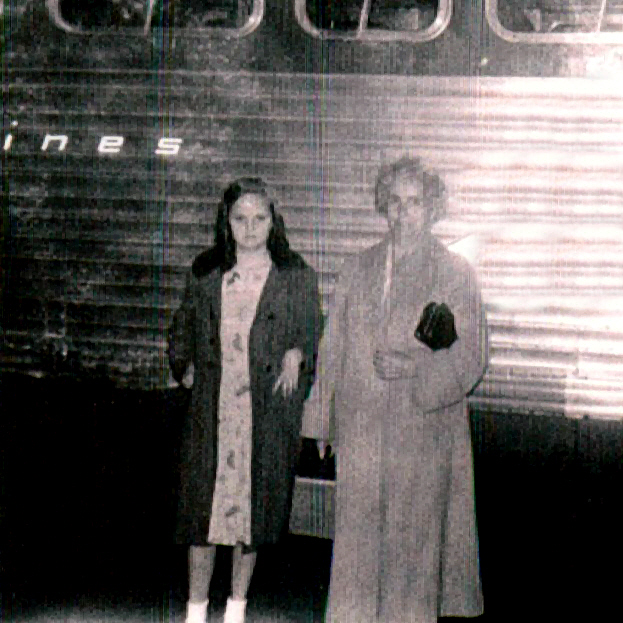
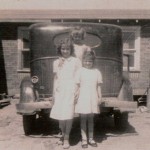
 modern trains, while not like flying, are more comfortable than their predecessors. To ride miles and miles sitting up straight would be awful. Aunt Sandy has lived an interesting life, and I enjoy talking to her about it. Today is Aunt Sandy’s 75th birthday. I feel very blessed to have her still with us. Happy birthday Aunt Sandy!! Have a great day!! We love you!!
modern trains, while not like flying, are more comfortable than their predecessors. To ride miles and miles sitting up straight would be awful. Aunt Sandy has lived an interesting life, and I enjoy talking to her about it. Today is Aunt Sandy’s 75th birthday. I feel very blessed to have her still with us. Happy birthday Aunt Sandy!! Have a great day!! We love you!!

 My nephew, Tucker Schulenberg is quite a guy!! He loves wheels…all kinds of wheels!! He loves to go out on the four wheeler, his motorcycle, and his rip stick. If fact, he has used his rip stick so much that he wore out his wheels. He just may be the first kid to ever do that. It certainly isn’t something I’ve ever heard of before.
My nephew, Tucker Schulenberg is quite a guy!! He loves wheels…all kinds of wheels!! He loves to go out on the four wheeler, his motorcycle, and his rip stick. If fact, he has used his rip stick so much that he wore out his wheels. He just may be the first kid to ever do that. It certainly isn’t something I’ve ever heard of before.
Tucker is a soft hearted guy, who likes to do things for other people. He likes to sleep in, but he gives that up in the winter months do he can get up and build a fire for his dad, my brother-in-law, Ron Schulenberg, (who recently adopted him…the best day in all of their lives). Tucker is very dedicated to keeping his dad warm and usually is a very good helper doing oil and sweeping the garage. Tucker loves spending time with his dad, and even work doesn’t seem like work when they are together. Although Tucker has this “hard-core armor” on outside he is very sensitive on the inside and always worries about his family especially his brother, Riley Birky and his sister, 
 Cassie Iverson! He loves them very much because he has such a huge heart. Tucker also loves his dogs and his cat.
Cassie Iverson! He loves them very much because he has such a huge heart. Tucker also loves his dogs and his cat.
Tucker is a comical guy. In school he is very popular because he is the class clown. He is always funny and joking around. Nevertheless, he is smart as a whip, and does well in school. He has a couple of really good friends…Joey, who he has known since preschool, and with whom he is very close. Their friendship has been a strong bond for both of them. His cousin Easton Moore is another of his close friends. They love to play Xbox games together, over the phone, since they live in different towns. And…like many boys his age, Tucker has a girlfriend. I’m not surprised, because he is a cute guy and so all the girls swoon over him.
As with most teenagers, Tucker sometimes gets “a little mouthy” and his mom, Rachel Schulenberg had to threaten to take away his privileges. Like most men, he never picks up his clothes or his towels. He definitely 
 not a “neat freak,” but she is trying to teach him the way to be a good husband in the future. I’m sure his future wife will appreciate that effort very much. It’s funny that Tucker doesn’t pick up his clothes, because he is very “into” the way he dresses. He enjoys looking nice and up-to-date with the current fashion trends. He was real excited to get a new leather jacket and cowboy boots for his birthday. Tucker has his head on straight, and in very informed about politics. He is a Trumper all the way, and that makes all of his family very proud. Today is Tucker’s 13th birthday. Happy birthday Tucker!! Have a great day!! We love you!!
not a “neat freak,” but she is trying to teach him the way to be a good husband in the future. I’m sure his future wife will appreciate that effort very much. It’s funny that Tucker doesn’t pick up his clothes, because he is very “into” the way he dresses. He enjoys looking nice and up-to-date with the current fashion trends. He was real excited to get a new leather jacket and cowboy boots for his birthday. Tucker has his head on straight, and in very informed about politics. He is a Trumper all the way, and that makes all of his family very proud. Today is Tucker’s 13th birthday. Happy birthday Tucker!! Have a great day!! We love you!!

